AFTER THE WILDFIRE
Wildfires are more frequent than ever this summer. Something is burning somewhere in Istra almost every day. Especially here in the southern part of the peninsula, where I live. Yesterday a friend saw the news on one of the local Internet portals. It was about another wildfire. This one was threatening the small village of Shtokovtzi. In the area around the small town that goes by the name of Svetvinchenat. About 30 - 35 kilometers from Medulin, my hometown. The fire was extinguished in the afternoon, a short but heavy rain fell late in the night, and then, early in the morning ...
... we drove to see how the place looks today, after the wildfire.
The ground was covered with carbonized plant material and ashes.
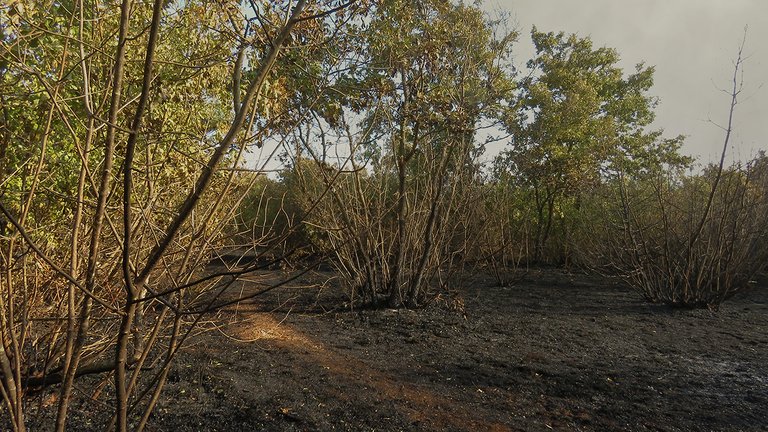
The trunks and the lower branches of the trees were black and barren ...
... but on the tops of the trees, part of the foliage was still holding on.

It looked a bit like autumn at first sight ...
... because the remaining leaves weren't green anymore.

They turned into various shades of brown and yellow. Some were heavily scorched and dark.
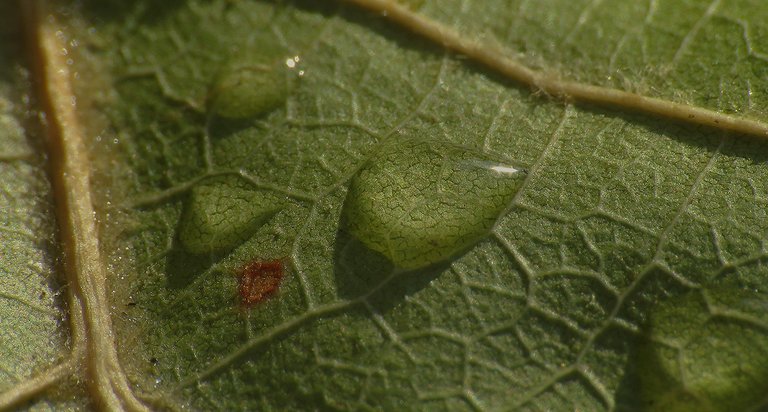
Traces of the last night's rain were still visible in some places.
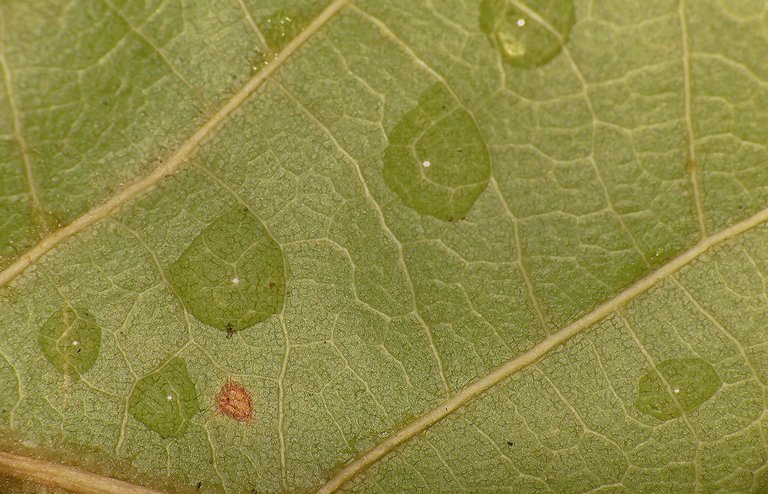
This is the first shot I took when I noticed the droplets. The flash was on so the water didn't look great in that strong, direct light.

The next shot, without the flash, wasn't great either. The droplets are barely visible.
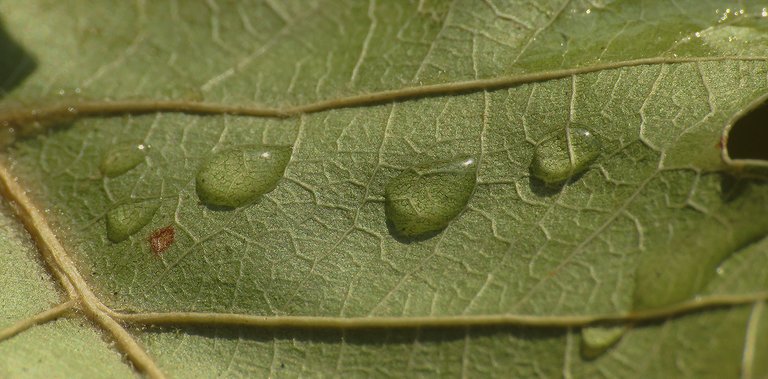
Only here did I find the right angle.
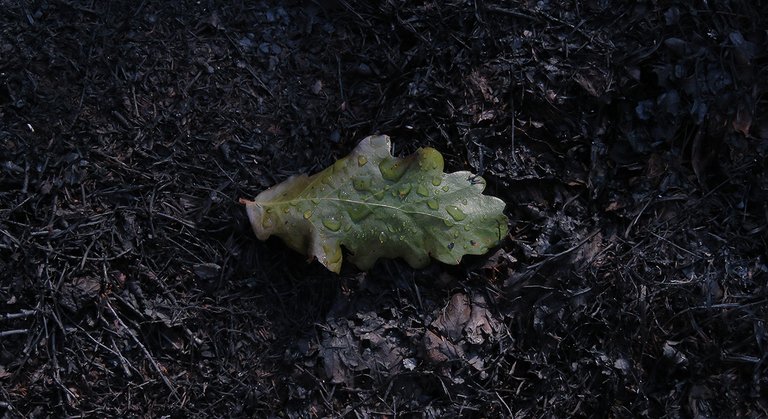
Some leaves that fell on the ground after the fire were also covered with liquid pearls.
Here you can take a better, more up-close look at one of those leaves.
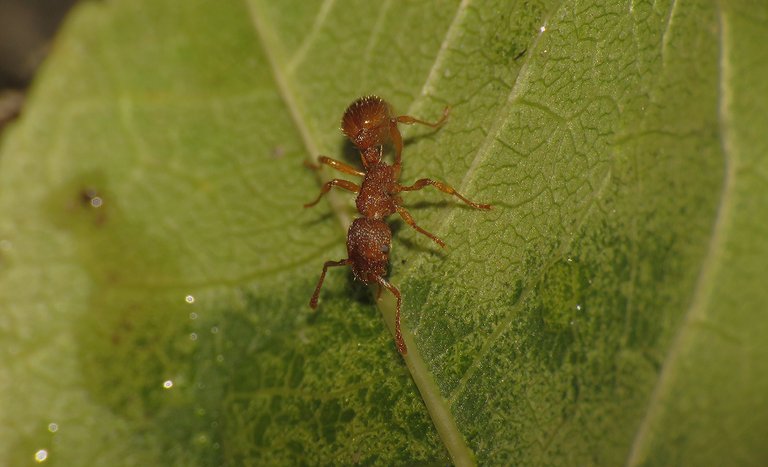
This scene was photographed on another wet leaf down on the ground.
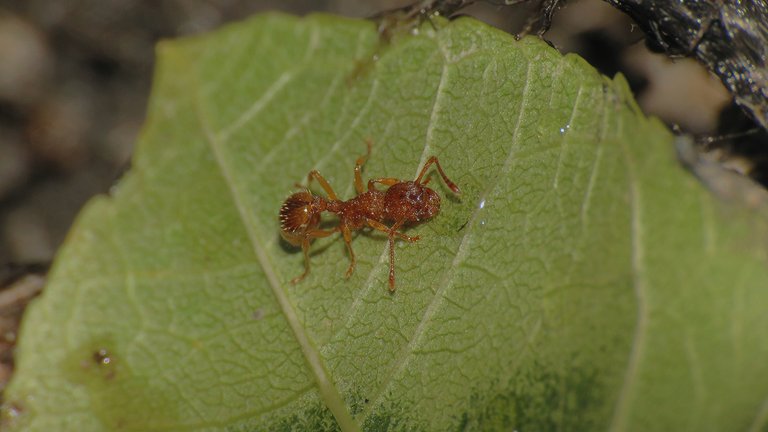
An ant was drinking from a drop of water. Tetramorium semilaeve is the name of this small, amber-colored species.
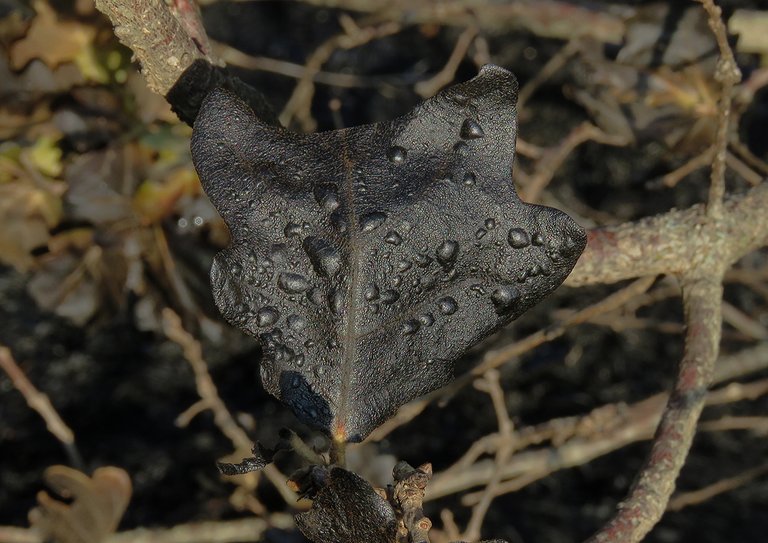
At first sight, the surface of this burned leaf also looked covered with droplets.
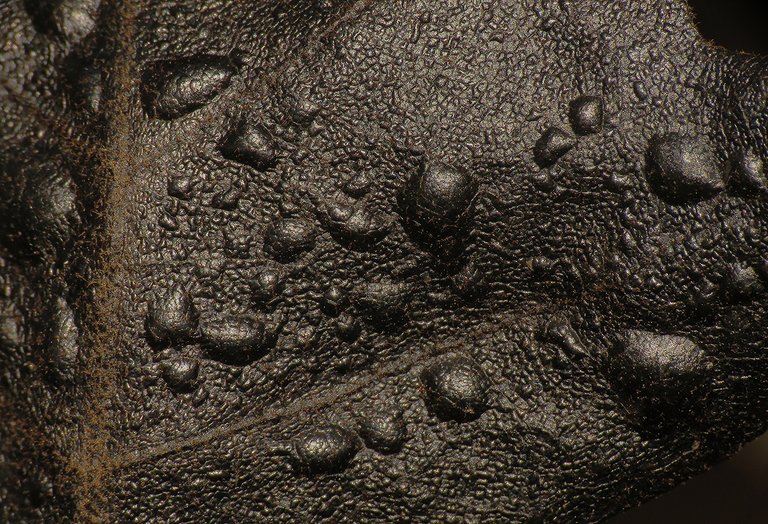
But a look through the macro lens reveals the absence of water. These blisters are a result of the leaf's exposure to high temperatures.
Soon I came across some colorful, red-orange details among the carbonized stuff on the dark ground. Here you can see a piece of wood from the tree heather (Erica arborea). The wood is very colorful under the bark, and this fragment, with its shape and intense orange-red color, resembles a little flame or a piece of ember that still hasn't died.
Here you can see the colorful fruits ...
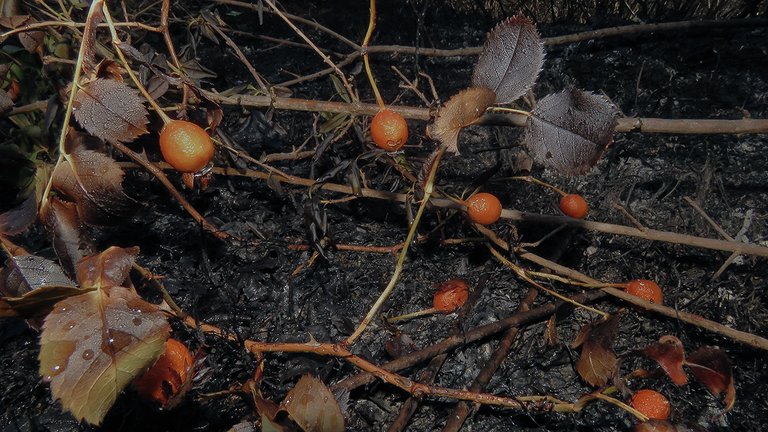
... of a burned rose.
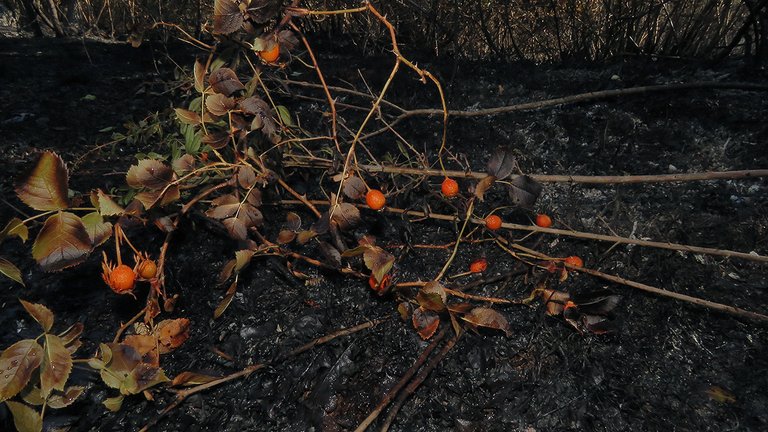
Rosa canina is the name of this scorched shrub. The plant is commonly known as the dog rose.

Twenty or thirty meters further, I noticed some small details in shades of yellow, orange, and brown down on the ground.
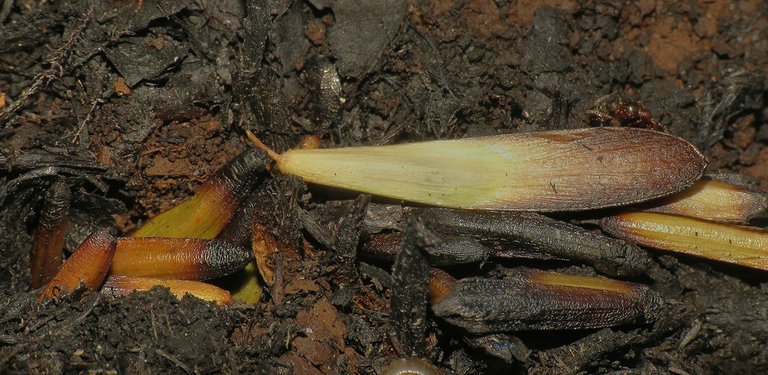
They looked like seeds. Or tiny fruits that contain seeds. I don't know from which tree or shrub they fell, but I can tell you that these seeds(or fruits) were nicely arranged at the entrance of a tiny hole in the ground ...
... and that the Tetramorium immigrans ants were transporting them into their underground kingdom.

Here you can take a break from the small details found on the ground ...
... and take another look at the wider setting.
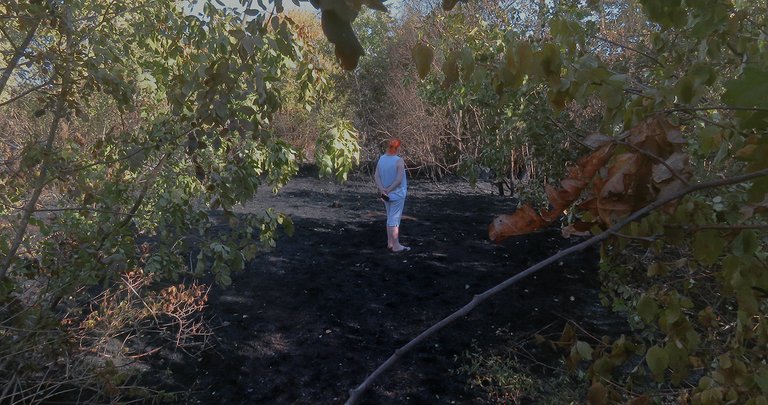
In this photograph, you can see the friend that was there with me, in the scenery changed by the fire.
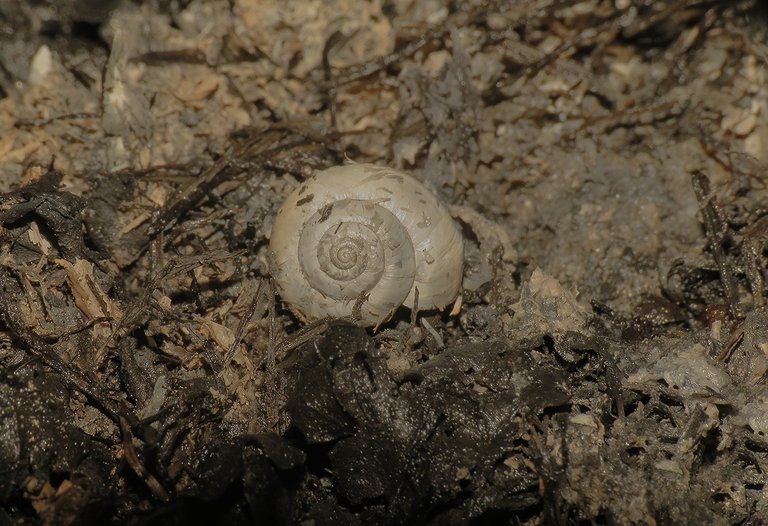
With this photograph, the focus is on the ground again.
This is one of the many empty shells that I saw along the way. Theba pisana is the name of the species that produced the tiny shell.
Here you can see the remains of a different kind of snail. The Pomatias elegans.
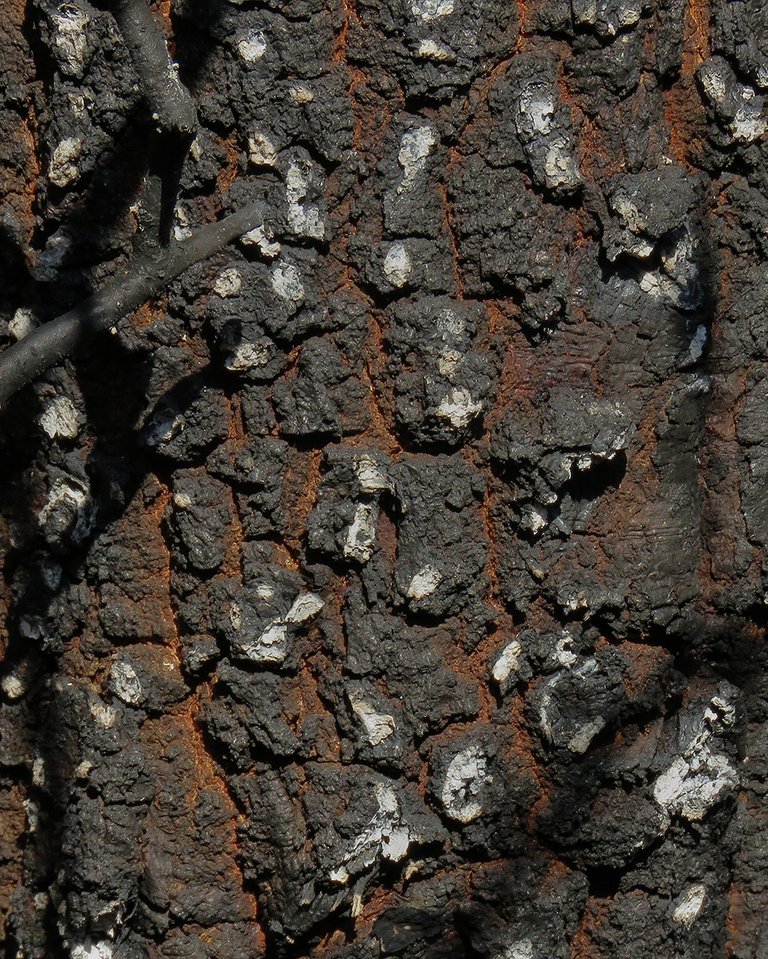
Here you can see the interesting pattern on the bark of the scorched oak tree.
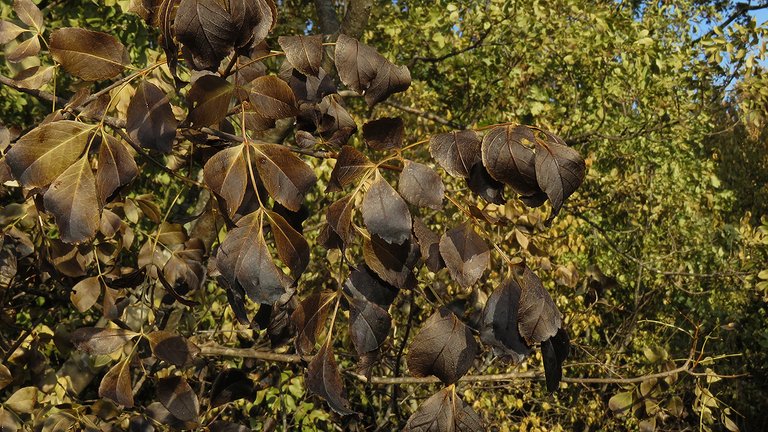
In this, slightly confusing shot, you can take another look at the foliage all around me.
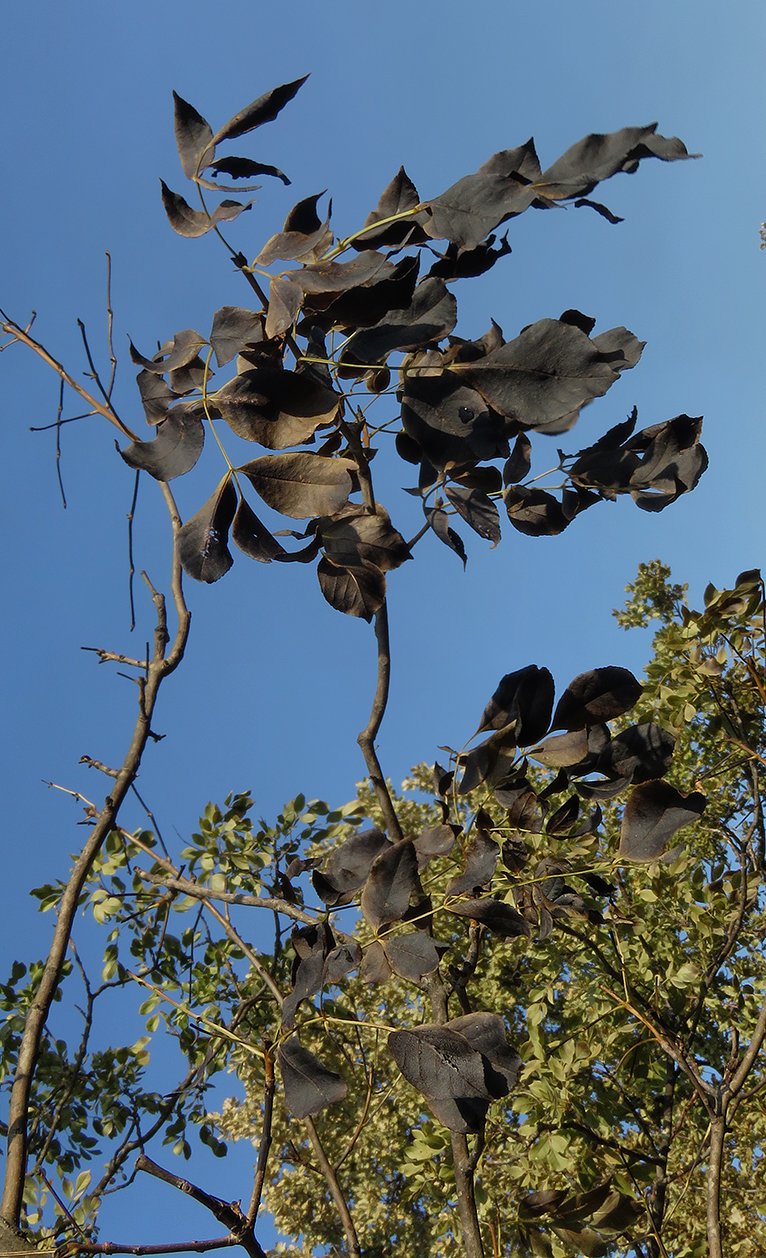
The leaves looked much better against the clear, blue background of the sky.
The scenery looked considerably better, and kinda larger, with the human figure in it, so I took another photograph with a friend of mine in the picture.
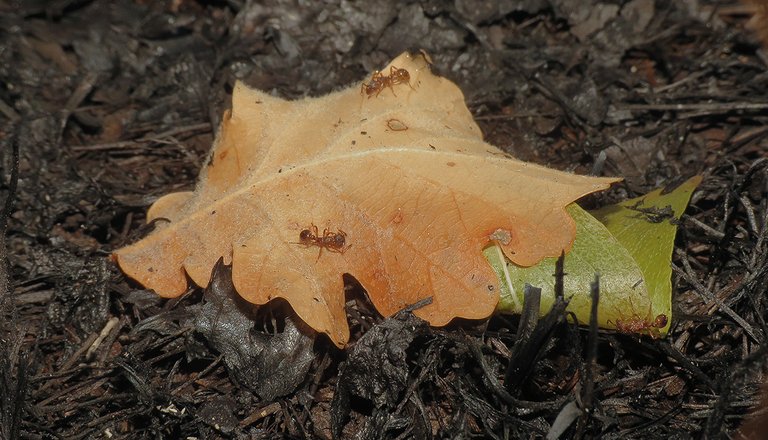
Soon I noticed a nice combination of a brown and a green leaf down on the ground, so I stopped ...
... and mounted the macro lens ...
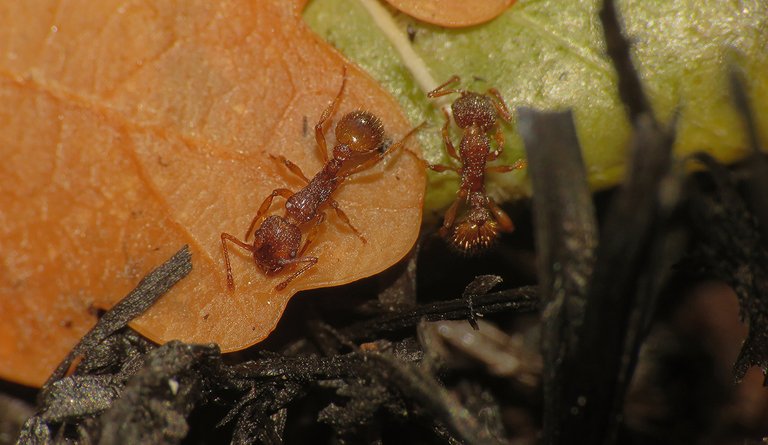
... to photograph the ants ...
... that were crawling in search of water or edibles.
The brown leaf has fallen from the oak tree. The green one was provided by some other plant. Can't tell you which one exactly.
The ants in this series of photographs are the Tetramorium semilaeve again.
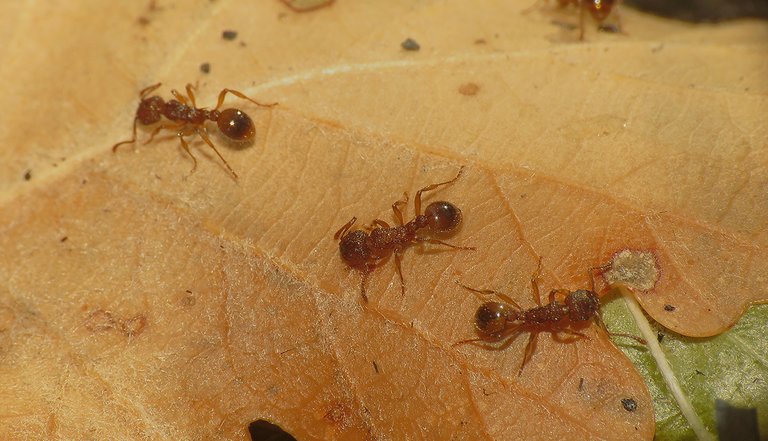
This species prefers warm and dry places and is very common and widespread in the Mediterranean regions of Europe, Africa, and Asia.
The nests are often situated under the stones.
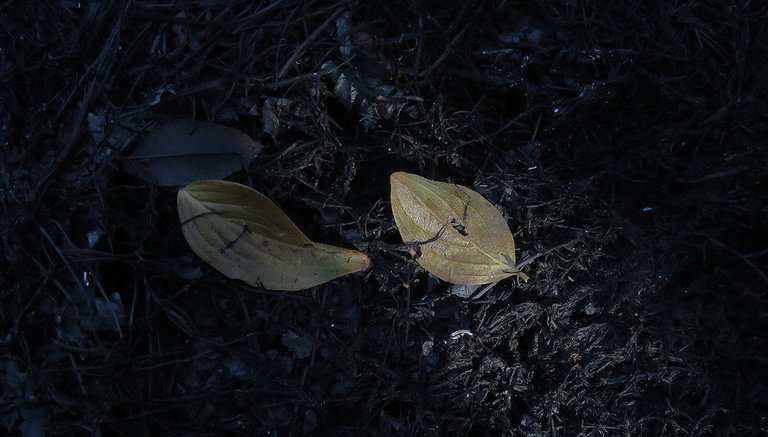
Here you can see the leaves of the Cornus sanguinea shrub.
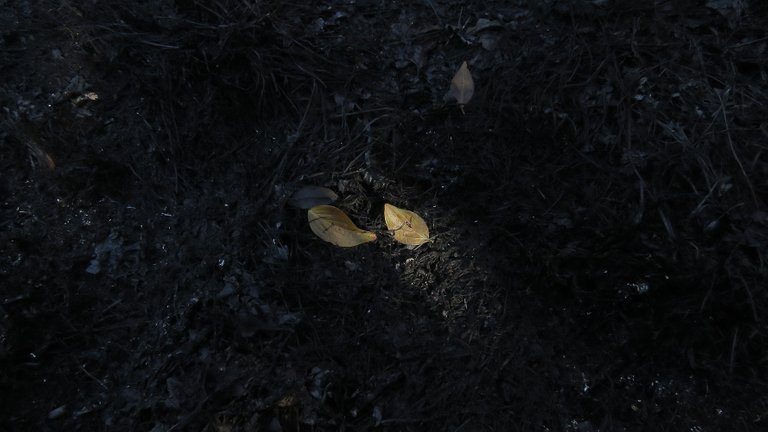
The beauty created by the islet of light in the shade under the trees inspired me to take these two photographs.
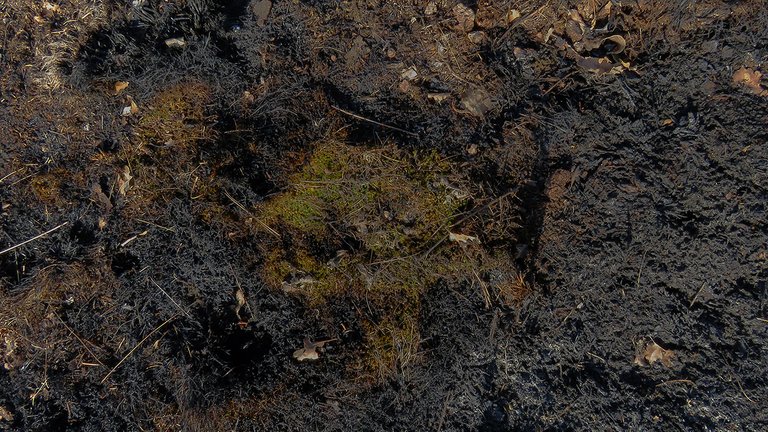
Here you can see an islet of moss surrounded by the dark, burned land.
In this last photograph, you can see how dangerously close to the village this fire was. One of the villas, built for summer rental on the outskirts of Shtokovtzi, is just across the narrow country lane that leads in and out of the village.
The following links will take you to the sites with more information about some of the plants and animals, shown in the post. I found some stuff about them there.
https://www.antwiki.org/wiki/Tetramorium_semilaeve
https://www.antwiki.org/wiki/Tetramorium_immigrans
https://en.wikipedia.org/wiki/Rosa_canina
http://www.molluscs.at/gastropoda/terrestrial.html?/gastropoda/terrestrial/terrestrial_snails_europe.html
AND THAT'S IT. THIS WEEKEND EXPERIENCE ENDS HERE. AS ALWAYS HERE ON HIVE, THE PHOTOGRAPHS ARE MY WORK - THE END.
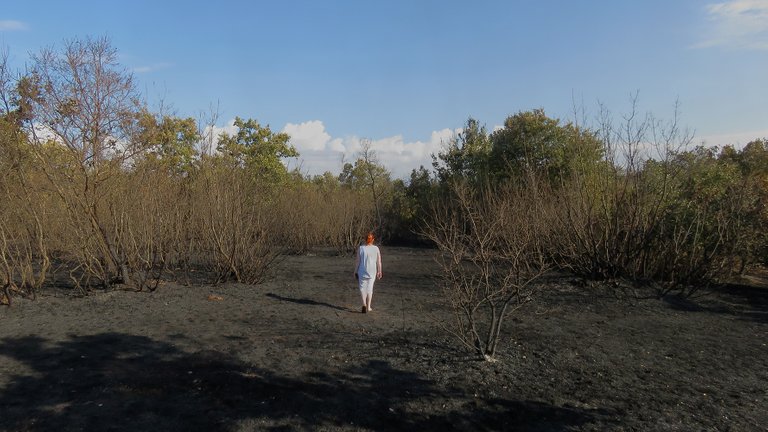
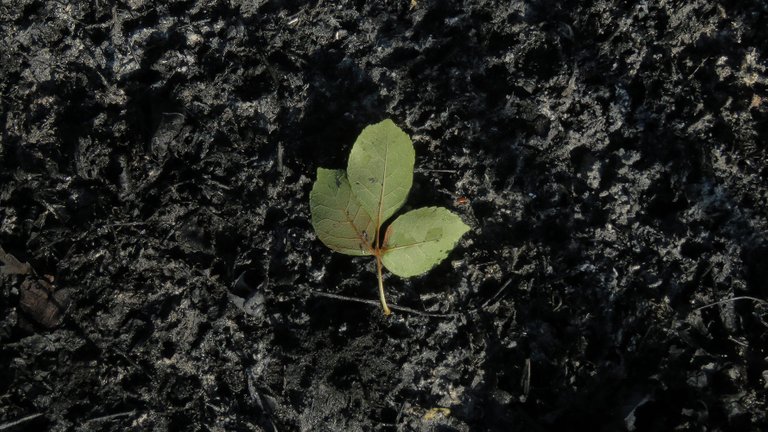
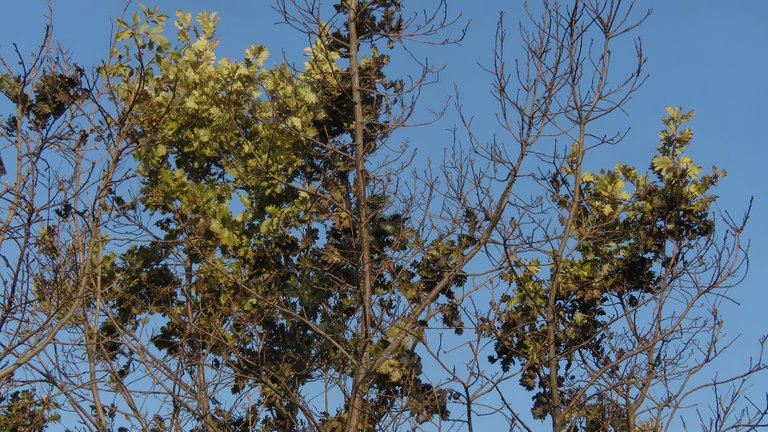
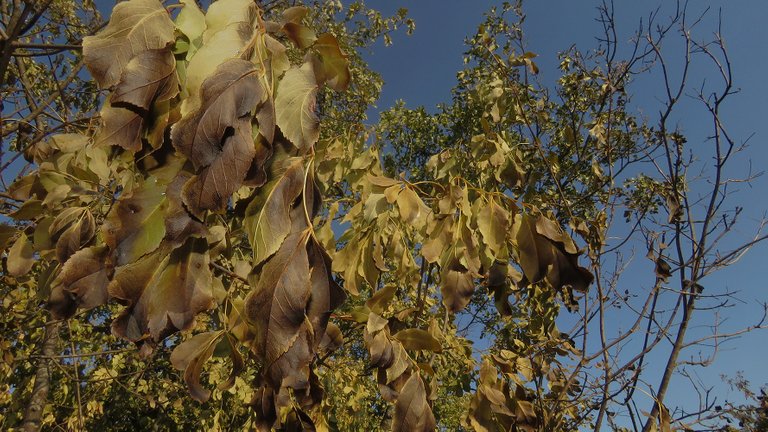
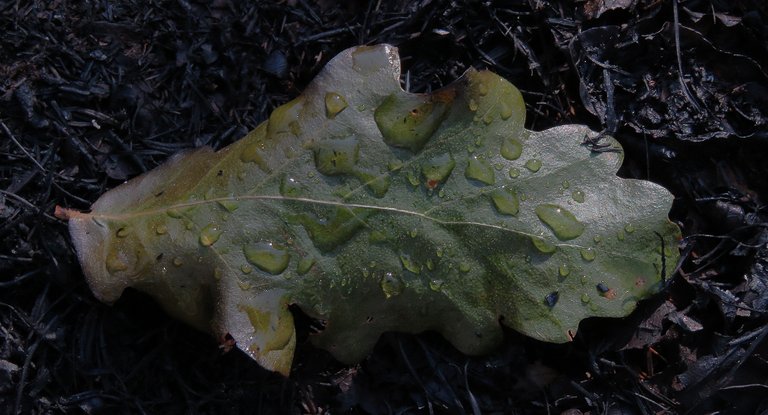
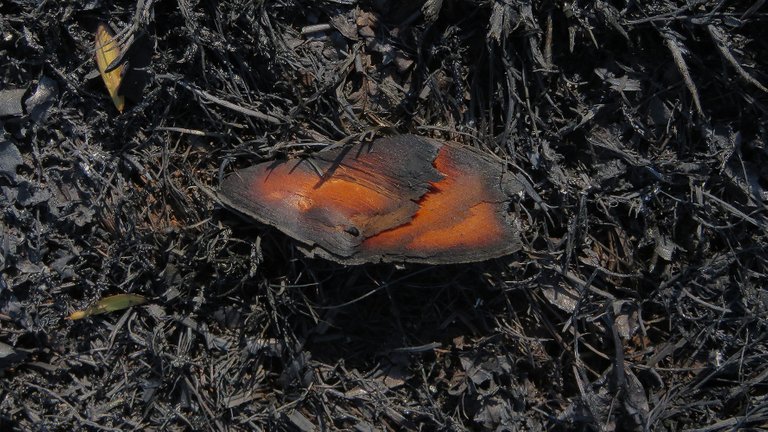
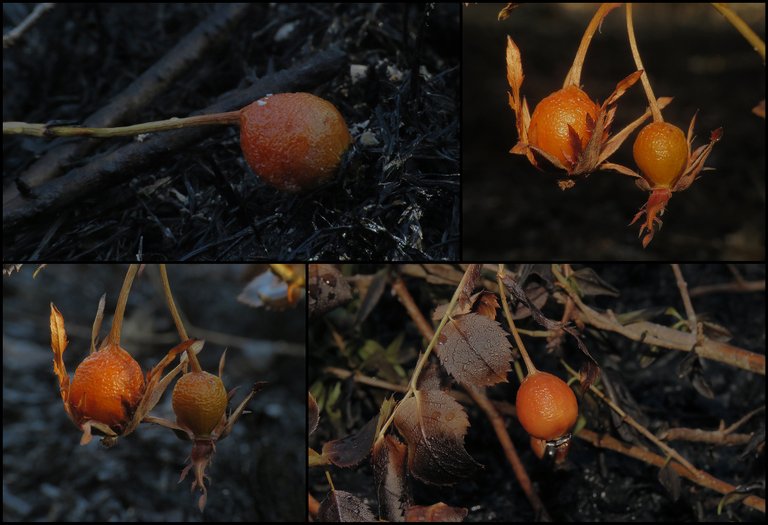
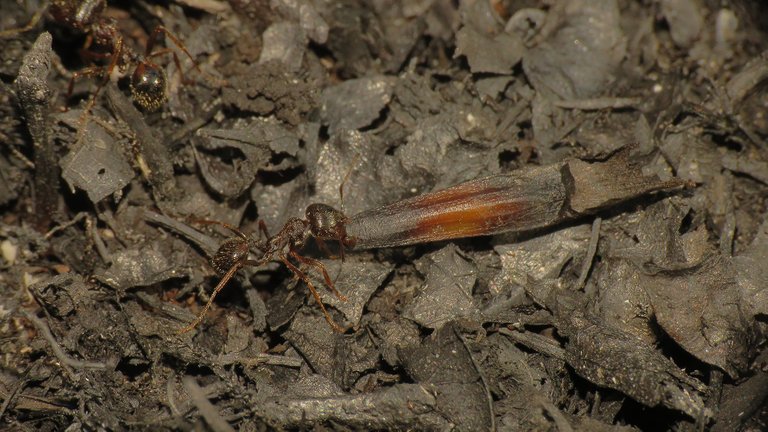
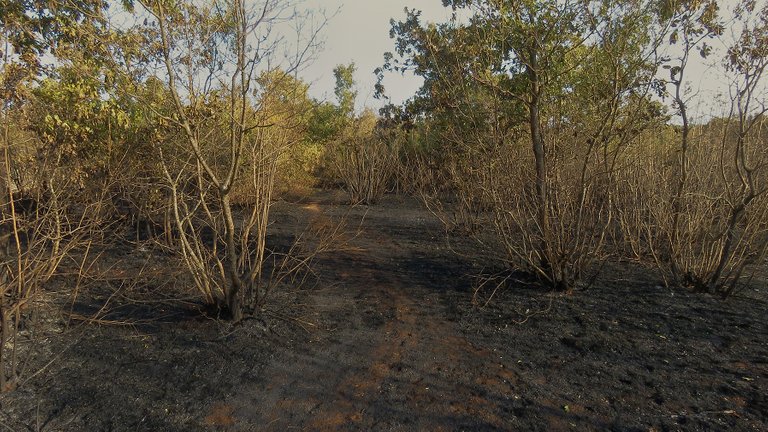
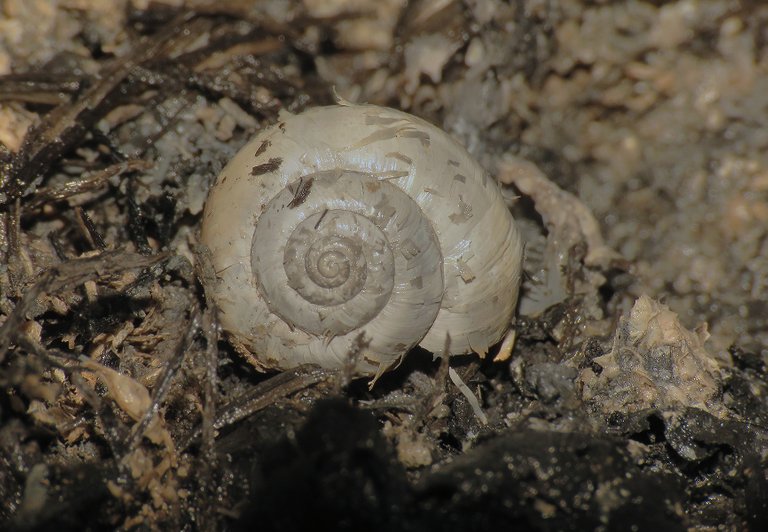

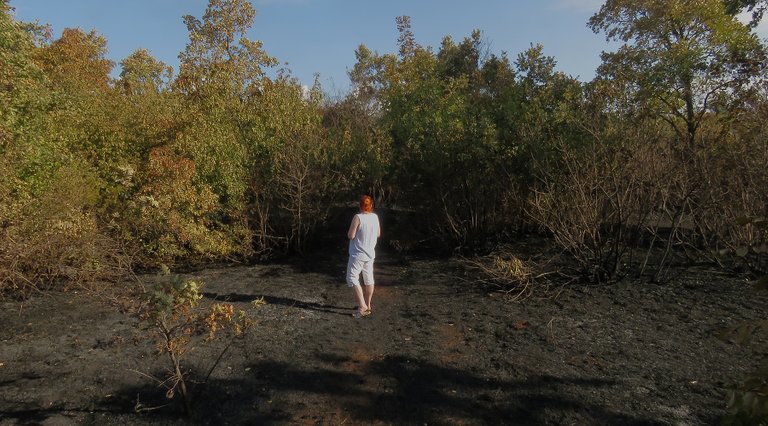

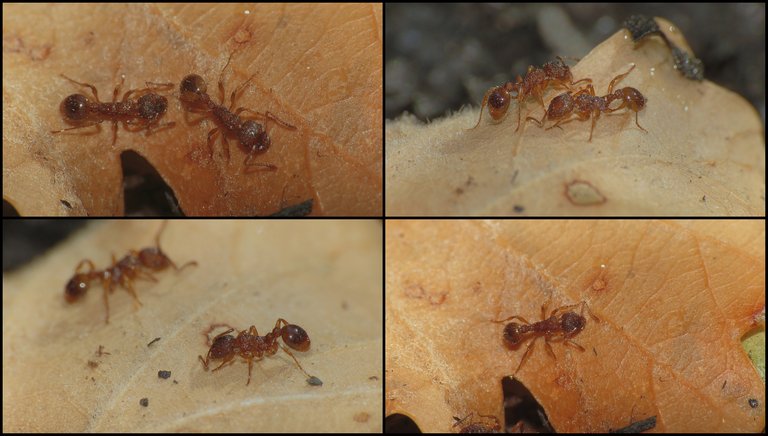
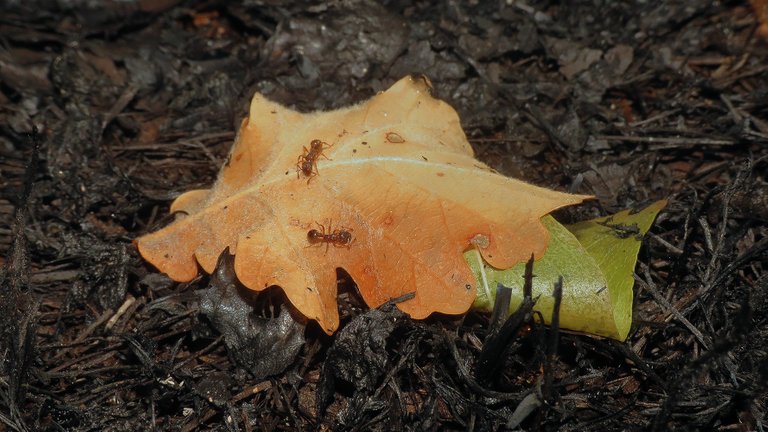
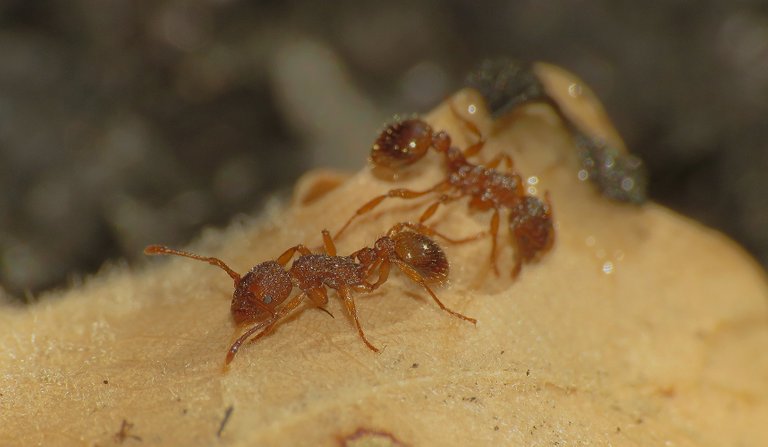

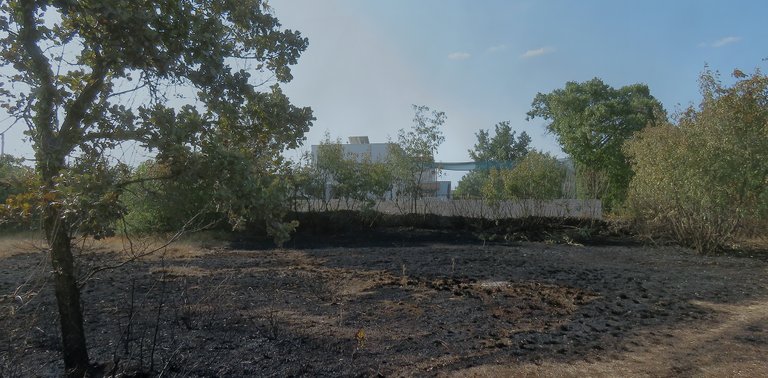
Beautifully captured, even though all had burned. Such a contrast.
Here in southern Spain too are many wild fires… every day a new one pops up.
Stay safe @borjan 👋🏻😊
Nice record of what happened after the wild fire. Luckily the rain came down to save many trees and animals. Hopefully more rain will come to revive the land. This place will become green in a few months time.
Forest fires often occur caused by dirty human hands, in Indonesia there are also very frequent forest fires in the summer,
What a contrast from the ground to higher in a tree. And it blew through fast enough the ants survived.